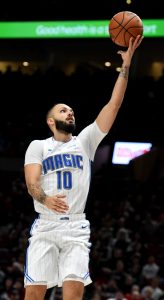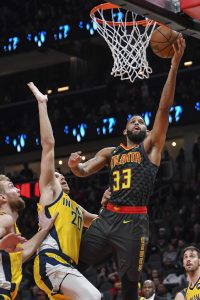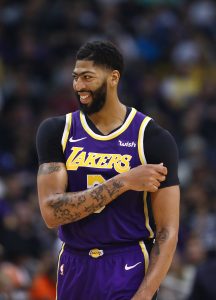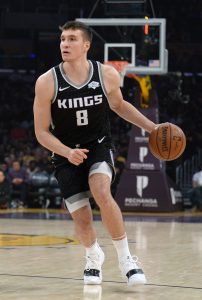Despite a flurry of player injuries, the Raptors remain firmly ensconced among the class of the Eastern Conference. Currently, they are seeded fourth with a 23-11 record.
If one were to project this present winning percentage across an 82-game schedule, Toronto would win 55 contests. Not bad for a team already missing its best player from the season prior.
Five of the Raptors’ top eight players in minutes logged per game this season (All-Star level studs Kyle Lowry and Pascal Siakam, plus starters Marc Gasol and Norman Powell and integral reserve Serge Ibaka) have been lost to various maladies for at least nine games each, as we have noted previously on Hoops Rumors.
The ascent of Siakam to two-way superstar status, when healthy, has been a boon to the Raptors’ terrific start to 2019/20. 33-year-old Lowry’s ability to help shoulder more of the offensive burden left by departed fun guy Kawhi Leonard, along with the rise of Fred VanVleet as a major scorer, have helped plenty, too.
Provided Siakam doesn’t miss too much more time with his stretched groin injury, he and Lowry should both be All-Stars this season. The team’s various absences have doubled as showcases for young role players like OG Anunoby, Chris Boucher, Rondae Hollis-Jefferson, and Terence Davis to prove their mettle.
Assuming the team is healthy by spring, the Raptors’ depth, size and star power makes them a legitimate contender in the East in 2020, one year removed from winning it all. Or does it? Can they really best the Bucks, Celtics, or Sixers in a seven-game series? Teams like the Pacers and Heat have a realistic chance at advancing far, too. And do any of these teams have a chance against the two stacked Los Angeles squads or the Nuggets in a Finals series?
Before the season started, many pundits assumed Raptors president of basketball operations Masai Ujiri would tactfully rebuild his team, moving some of his solid veterans on good deals for future assets. Lowry has one season remaining this year; Gasol and Ibaka are both on expiring contracts.
The team has proven to be better than even some of the most devout occupants of Jurassic Park could have hoped. Should the Raptors blow it up? Or should they move some of their intriguing youth for a bit more veteran help ahead of another playoff push? The team will probably strive to avoid adding too many contracts that will extend beyond the 2020/21 season, as that summer promises to supply a stacked free agent class.
This writer believes that, barring some kind of collapse down the ranks ahead of the deadline, the Raptors should look to improve their team for 2020. The Raptors have bucked the odds to reach this point. Let them see this through. Though the Bucks, Lakers, and Clippers feel like the current cream of the crop in the NBA, the Raptors number among a host of talented squads nipping at their heels.
Should the Raptors be buyers or sellers at the trade deadline this season? Vote below in our poll, then head to the comment section to share your thoughts. We look forward to hearing from you!
Trade Rumors app users, click here to vote.


 Allen Crabbe
Allen Crabbe For a star like
For a star like 
